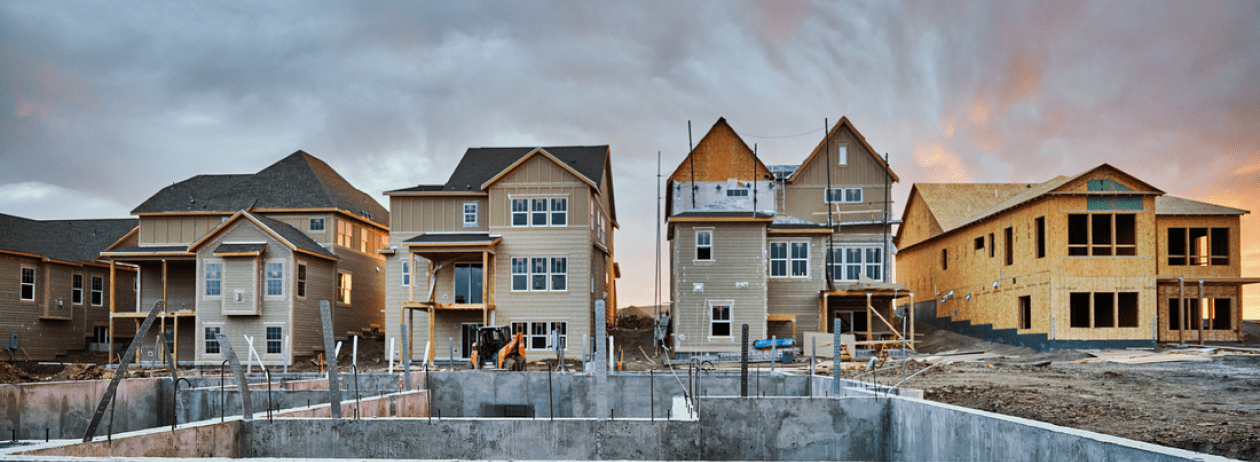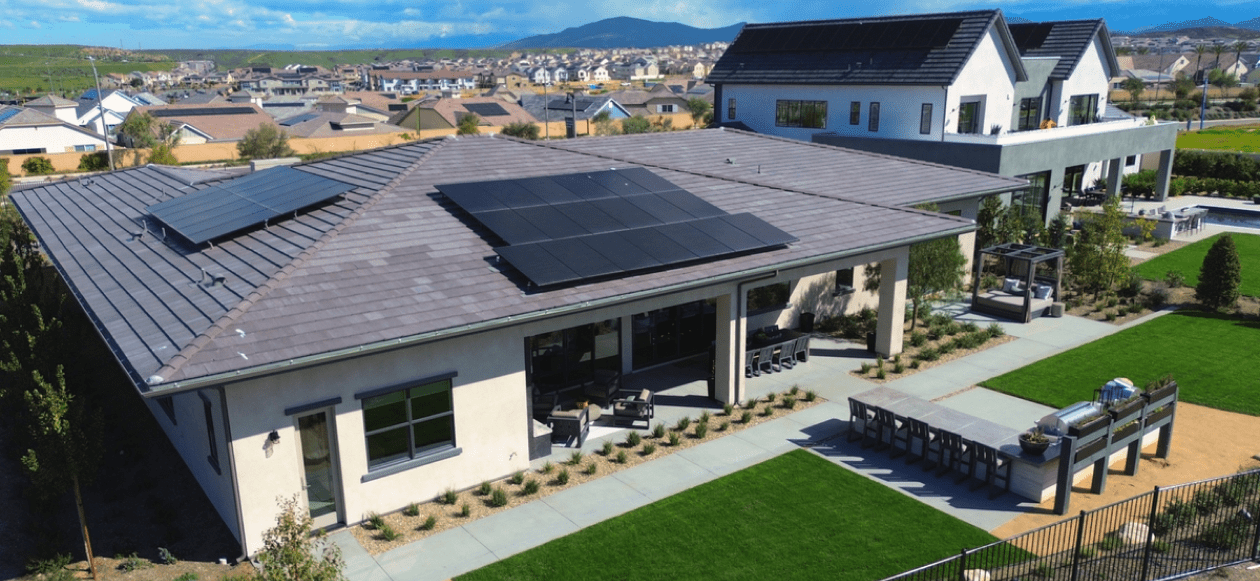

The global energy transition isn’t just a buzzword – it’s a pressing reality that’s reshaping industries across the board.
Among these, the home building industry stands at a critical intersection, where sustainability, affordability and innovation must converge to meet both regulatory demands and consumer expectations.
As the world grapples with climate change, the push toward energy-efficient, sustainable home building has never been more urgent.
We sat down with three industry leaders at the Pacific Coast Builders Conference (PCBC) to explore the key aspects of the energy transition in home building – focusing on the challenges, strategies and future direction that will define this vital sector.
Home Builder Goals in Sustainability
Sustainability in home building is no longer an optional consideration – it has become a core component of corporate strategies. Leading companies in the industry are now setting ambitious goals to enhance home performance and sustainability.
The focus of these goals is on building energy-efficient homes that not only benefit the environment, but also offer long-term economic advantages to homeowners. This includes aligning building practices with ENERGY STAR® standards and aiming for homes that can meet stringent energy-efficient criteria.
The delicate balance between affordability and sustainability is a key theme, as builders strive to offer homes that are both energy efficient and financially viable for buyers.
The integration of solar and battery storage is a critical component of the energy transition in home building. In markets like California, solar power has already become a standard feature in new homes, driven by regulatory mandates backed by consumer demand.
The focus now is on shifting towards optimizing these systems and scaling them across different markets. However, the challenges are significant. The cost of batteries and the complexity of integrating them into existing utility infrastructure pose hurdles that must be overcome.
In some regions, the lack of regulatory support or utility infrastructure further complicates the widespread adoption of battery storage. Despite these challenges, the potential benefits – increased energy resilience and reduced utility costs – make solar and battery storage essential components of future-proof homes.


“You've got to look at what the economic demands in the market are from a cost of energy perspective, as well as what the environmental demands are. If you're in certain areas where you have three or 4 or 5 times a year, major power outages, you're going to need to provide solutions for your customers for that.”
- Joel Abney, vice president of operations, SH Residential Holdings
Energy Management and Smart Technology
The energy demand on homes is increasing and as homes are shifting from hybrid to all-electric, the role of smart technology in managing energy consumption is becoming increasingly important. Smart panels or home energy management systems are emerging as key tools for optimizing energy use within new homes.
These technologies allow homeowners to monitor and control their energy consumption in real time, giving them the flexibility to select which loads are backed up during an outage, while extending battery life.
By integrating these technologies, homeowners can make more informed decisions about their energy use, leading to greater efficiency and sustainability.
With the load management bundle from Sunnova, builders can avoid expensive upgrades for 400-amp service and even roll the cost of the smart panel into the lease.
“As you start to get to this next level of technology, it really puts those tools in the consumer's hands.”
- Joel Abney, vice president of operations, SH Residential Holdings

Understanding consumer demand is vital for effectively promoting energy-efficient homes. While energy efficiency is a growing concern among homebuyers, it’s often not the driving factor in purchasing decisions.
Location, design and, most importantly, cost typically take precedence. Depending on the type of buyer for the community, the value props used in marketing these home energy solutions vary.
Effective communication strategies often focus on the long-term financial benefits of energy efficiency, such as lower utility bills and protection against future energy price increases.
Emphasizing the potential health benefits of living in a more sustainable home can also be a persuasive argument.
For many buyers, the decision to invest in an energy-efficient home is ultimately driven by a combination of these factors, rather than by the technical details of the energy systems themselves.
“Interest rates might come down...but your energy rates won't. Those are on an upward trajectory, so do this to insulate yourself...not just today, but in the future. I still feel like it's a persuasive message, especially in a more cost-motivated market, which we have right now.”
- Stephen Myers, CEO, Thrive Home Builders

The push for more sustainable home building is also being driven by changes in building codes and regulations. Across the United States, building codes are increasingly promoting the electrification of homes and the integration of renewable energy sources.
Builders are being challenged to adapt to these new requirements while maintaining the affordability and quality of their homes.
The transition to fully electric homes, for example, presents both opportunities and challenges. While it aligns with the broader goal of reducing carbon emissions, it also requires significant changes in the way homes are designed and constructed.
The availability of suitable products, such as heat pump water heaters and induction cooktops, is a big factor in this transition. Home builders must work closely with manufacturers to ensure the necessary technologies are available and affordable.

“The fuel switch from hybrid to electric can result in a more expensive bill. I don't love that, to be quite honest with you, because part of the promise of efficiency is a lower bill...So solar is a really huge part of that. To offset that cost.”
- Stephen Myers, Thrive Home Builders
The Role of Policy and Incentives
Government policies and incentives are paramount in driving the energy transition in home building. Tax credits, like those provided under the Inflation Reduction Act, offer financial incentives for builders to adopt energy-efficient practices.
These incentives are designed to offset some of the costs associated with building higher energy standards, such as ENERGY STAR® or Zero Energy Ready Homes. However, the implementation of these policies isn’t without its challenges.
The lack of a national building code means builders must navigate a complex landscape of state and local regulations, which can vary significantly. Also, the requirement to meet increasingly stringent energy standards over time adds to the complexity and cost of home building.
Despite these challenges, the long-term benefits of building energy-efficient homes – both for the environment and for homeowners – make it a worthwhile investment.

“I think everybody was generally excited when the IRA was announced and passed that we had a ten-year run where we could plan for this. We could build a more energy-efficient home, and we could help to offset some of those costs with the credits that are available there.”
- Corey Self, director of corporate sustainability, Pulte Group
The Future of Home Building

Looking ahead, the future of home building is likely to be shaped by several key factors. First, policy needs to shift to support the industry – this is a resounding theme at PCBC and continues to impact builders across the US.
The goal of achieving net-zero energy homes by 2030 is becoming a central focus for the industry. This goal aligns with broader efforts to reduce carbon emissions and mitigate the impacts of climate change.
Achieving this will not only require advancements in building technologies, but also a concerted effort to scale these innovations across the industry.
Another important trend is the widespread integration of home energy systems with the broader energy grid via net metering and related programs. Through these incentive-based plans, homes not only generate enough energy to meet their own needs, but also contribute excess energy back to the grid, helping to stabilize the energy supply and reducing reliance on non-renewable energy sources.
Additionally, demographic changes – such as an aging population – will influence the design and technology used in homes. As more people live longer, there will be a growing demand for homes that can accommodate the needs of older residents to age in place. This could drive innovation in areas like home automation, accessibility and health monitoring.
“I think the future of home building will be homes generating electricity far beyond what they need and feeding that back into the grid for the older homes.”
- Corey Self, Pulte Group
A Journey Worth Taking

Photo Credit: SHAWOOD
The energy transition in home building is a complex and multifaceted process that presents both challenges and opportunities. As the industry continues to evolve, builders must navigate a rapidly changing landscape of regulations, consumer expectations and technological advancements.
By embracing these changes and adopting innovative approaches to sustainability, the home building industry can play a sizable role in creating a better future.
This journey isn’t without its obstacles, but with careful planning and a commitment to long-term goals, we can achieve a successful energy transition that benefits both homeowners and the planet.
The future of home building is bright, and the transition to sustainable, energy-efficient homes is an essential step toward a greener tomorrow.
We’d love to help you with your next new home community.



